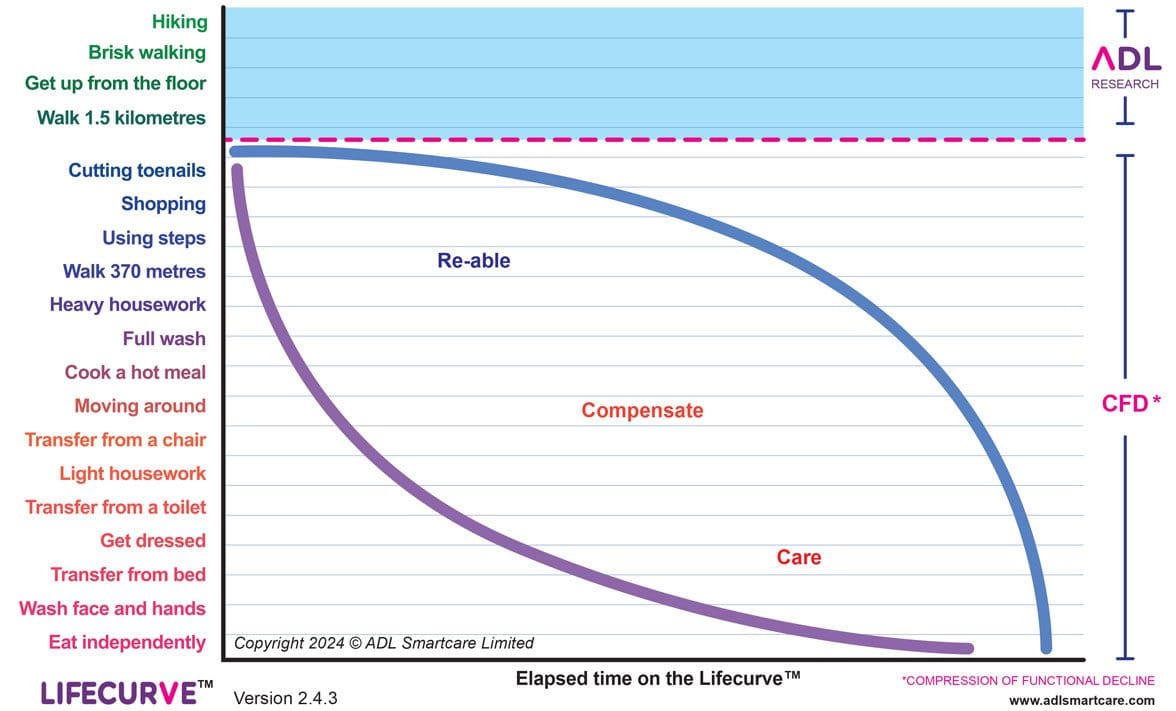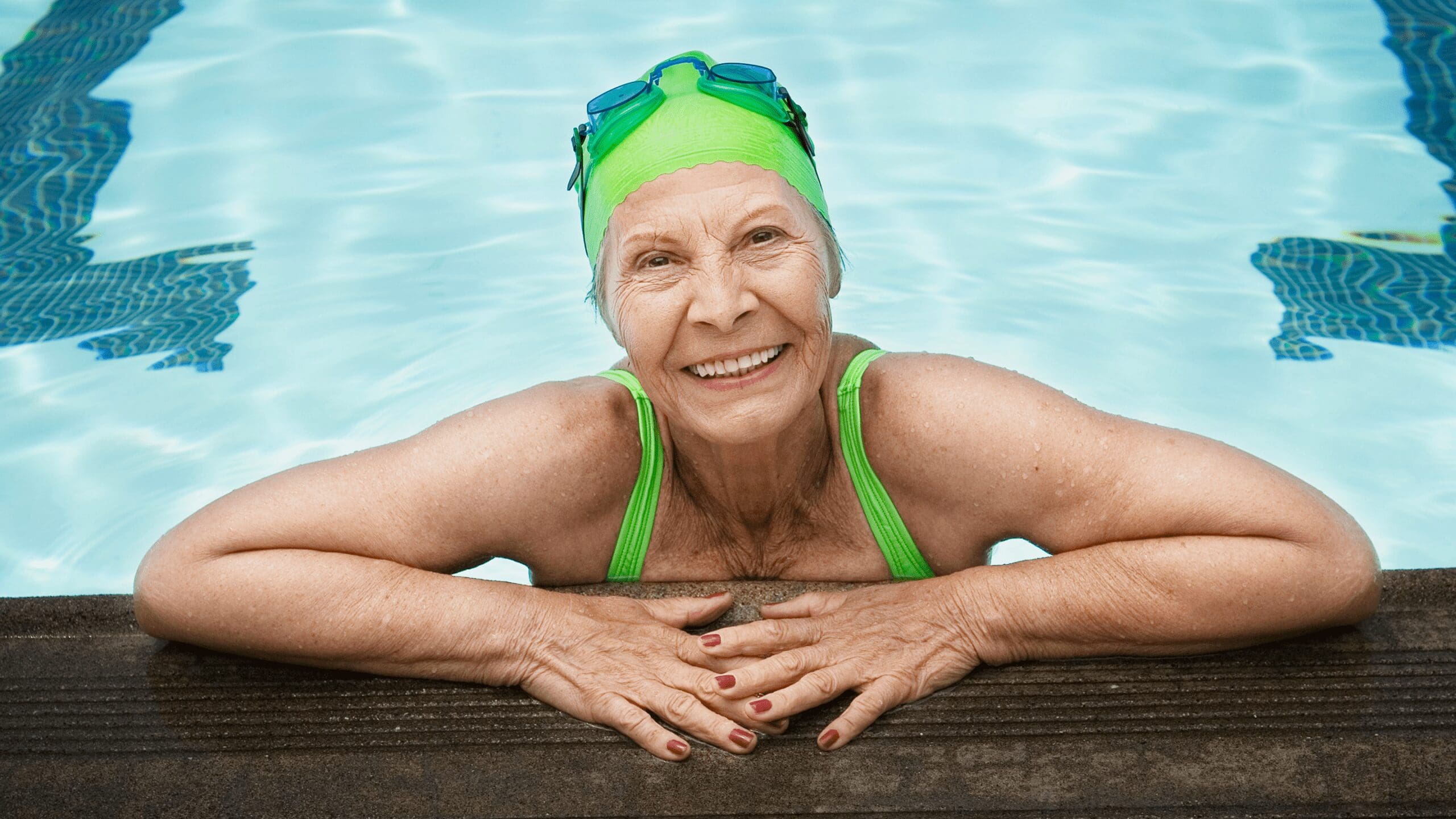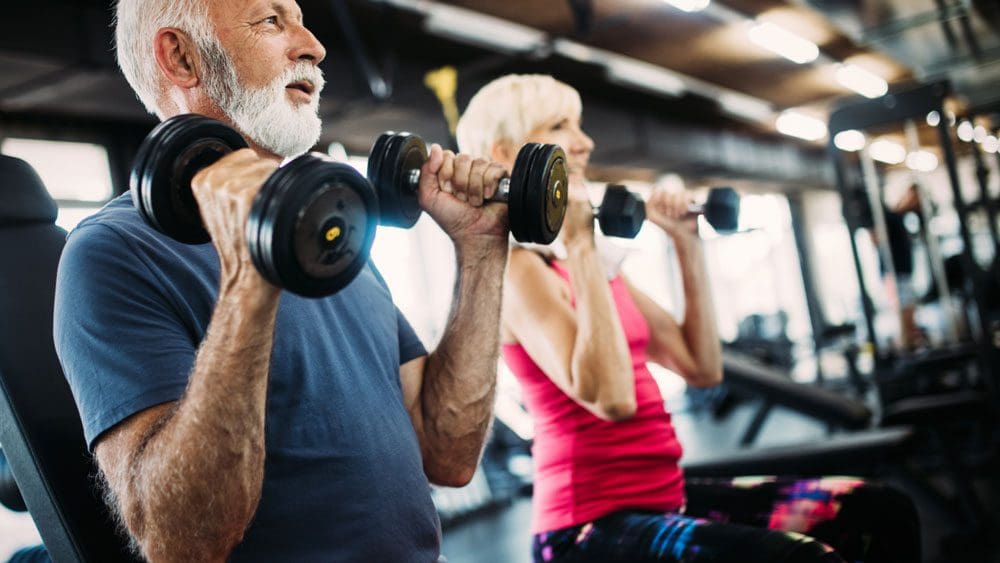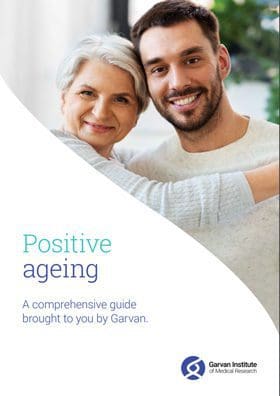Why Wellness and Reablement are Important in Aged Care
To understand why Wellness and Reablement are important, you need to know some facts about the ageing journey, healthy ageing, and the impact of ageism within Australian society.
Scroll down for more information.


Wellness and Reablement is everybody’s business
WHO defines healthy ageing as “the process of developing and maintaining the functional ability that enables wellbeing in older age.”
The 2015 WHO World Report on Ageing and Health examined the latest evidence about the ageing process. It noted that many common perceptions and assumptions about older people are based on outdated stereotypes. As evidence shows, the loss of ability typically associated with ageing is only loosely related to a person’s chronological age.
The report emphasises that healthy ageing is more than the absence of disease. For most older people, the maintenance of functional ability has the highest importance.
Functional ability is about having the capabilities that enable all people to be and do what they have reason to value. This includes a person’s ability to:
- Meet their basic needs;
- Learn, grow and make decisions;
- Be mobile;
- Build and maintain relationships; and
- Contribute to society
Most of the health problems associated with older age are the result of chronic disease. Many of these diseases can be prevented or delayed by engaging in healthy behaviours. The WHO report goes on to say that even in very advanced years, physical activity and good nutrition can have powerful health benefits.
Hence, aged care service delivery must be focused on providing short term support that:
- Builds capacity and resilience
- Optimises functional, mental and cognitive capacity through practice
- Enables a person to compensate for any loss of ability by finding other ways to accomplish tasks
- Fosters social connections
For people experiencing continued declines in capacity, support should aim to minimise that decline through a “doing with” rather than “doing for” approach. Additionally, support that promotes continued engagement and growth provides the best opportunity for an older person to continue to live a dignified life.
Why understanding the ageing journey and the Science of Ageing Well is key to Wellness and Reablement.
Healthy ageing is about creating opportunities that enable people to be and do what they value. Everybody can experience healthy ageing. Research suggests that only around 25-30% of the age-related decline is due to genetics, the rest being linked to lifestyle choices. Over the past 20 years, research shows the benefits of focusing on supporting, as much as possible, an individual’s continued independence. It also explores how an overreliance on services is linked to increasing functional decline.
Research conducted by Gore et al (2018) shows we can predict how well we are ageing simply by our continued ability to perform 19 specific activities and that the sooner someone stops performing tasks for themselves, the faster they tend to lose their functional ability. Hence, people who continue to do things for themselves tend to remain independent and live better longer. The research aims to understand how age-related functional ability declines at an individual and population level, and when and where to intervene.
Add life to years
A framework called the LifeCurve™ developed by ADL SmartCare Ltd and based on the Gore et al research shows how people decline sequentially, over a ten-year period, in their capacity to independently manage daily activities. It also illustrates how any decline rate and time frame can be positively impacted by behaviour and intervention.
The LifeCurve ™ shows two trajectories – a sub-optimal life curve purple curve) with a fast early decline, and an optimal life curve (blue curve) in which the early decline is slowed down to enable people to live independently longer before losing the ability to undertake activities like walking, shopping, and personal care. Difficulty cutting toenails is typically seen as an early indicator that intervention may be needed.
Subject to the ability and motivation of the individual, the best order for interventions based on the research is to maintain or recover ie re-able an individual through interventions such as strength, mobility and balance programs, exercise, regaining confidence or skills through practice and learning new ways to do everyday activities. Next comes ‘Compensate‘, when interventions such as properly matched assistive technology or home modifications are considered to support an individual to compensate for any difficulties but still be as independent as possible. The third option is care which needs to be provided in a way that continues to support a person’s level of independence to the optimum capacity and prevents for as long as possible the need for increased support.


Professor Peter Gore from ADL Smartcare Ltd explains the LifeCurve in the first video below, and then the 15 daily tasks a person should be able to do to live independently in the following video. Wellness and Reablement approaches aim to assist people to perform these daily tasks independently for as long as possible and enable older adults the ability to live better; adding life to years.
You can read more about this research in the CHSP manual 2020 – 2022 (2.2.1) or by clicking here.


Movement truly is medicine!
The effects of ageing and loss of fitness are commonly confused. The loss of ability that results from inactivity may lead to a person requiring home care. People with long-term conditions and those who experience pain often mistakenly believe that exercise will make things worse, rather than understanding that the more conditions you have the more you need to improve the four aspects of fitness: strength, stamina, suppleness, and skill.
Evidence is growing that recovery of these four attributes of fitness improves cognitive ability and reduces the risk of dementia. The physical, mental, and social benefits of exercise can help people to live more independently and more autonomously.
One major change needed is to challenge and reset the beliefs about what happens to us as we grow older, and know that it is possible to combat some effects not by a drug or potion or elixir of life but by increasing activity -physical, mental, and social.
The article in the British Medical Journal – Focus on physical activity can help avoid unnecessary care (2017) suggests that concerted effort to provide support and opportunities for physical activity can help older adults maintain independence and lessen the costly burden of social care.
Key messages:
- The effects of ageing and the effects of loss of fitness are often confused
- Older people can increase their fitness level to that of an average person a decade younger by regular exercise
- Loss of fitness increases the risk of needing social care
- People should try to stay fit enough to be able to get to the toilet in time. Crossing this threshold increases social care costs five fold
- Environments and expectations need to change to make exercise possible for middle aged and older people, including open spaces and facilities for active travel.


Personal story – Moving more is good for us
We all know moving more is good for us and the people we support. We know that we need to be more active but sometimes it can be difficult to get started. Sometimes it’s just about moving a bit more every day in whatever way works for each person.
Take a moment to watch this great video about Sue and her determination to keep moving every day in a way that worked for her and has put her back on her feet.
What is functional ability and how does it relate to healthy ageing?
Functional ability consists of the intrinsic capacity of the individual, relevant environmental characteristics, and the interaction between them.
Intrinsic capacity comprises all the mental and physical capacities that a person can draw on and includes their ability to walk, think, see, hear and remember. The level of intrinsic capacity is influenced by several factors such as the presence of diseases, injuries, and age-related changes.
Environments include the home, community, and broader society, and all the factors within them such as the built environment, people and their relationships, attitudes and values, health and social policies, the systems that support them and the services that they implement. Being able to live in environments that support and maintain one’s intrinsic capacity and functional ability is key to healthy ageing.
The Garvan Institute of Medical Research in Victoria put together an easy to read brochure called ‘Positive Ageing. A Comprehensive Guide’ brought to you by Garvan. We think this guide is a great place to start to build your knowledge and understanding of ageing, how the body works, and common diseases that affect people.
To view ‘Positive Ageing – A comprehensive guide‘ click the cover.
Sign up here for Count Me In membership to access our free resources and to connect with our team of professionals. You can leave a message, give us feedback, ask a question or request a presentation on reablement by submitting this form.
Disclaimer: By submitting this form, you are agreeing to be added to the Count Me In hub, and receive our monthly newsletter. We might also ask for your input and feedback on aged care-related topics, and on new KeepAble resources. You can unsubscribe from this list at any time, and your details will be held by KeepAble only.


